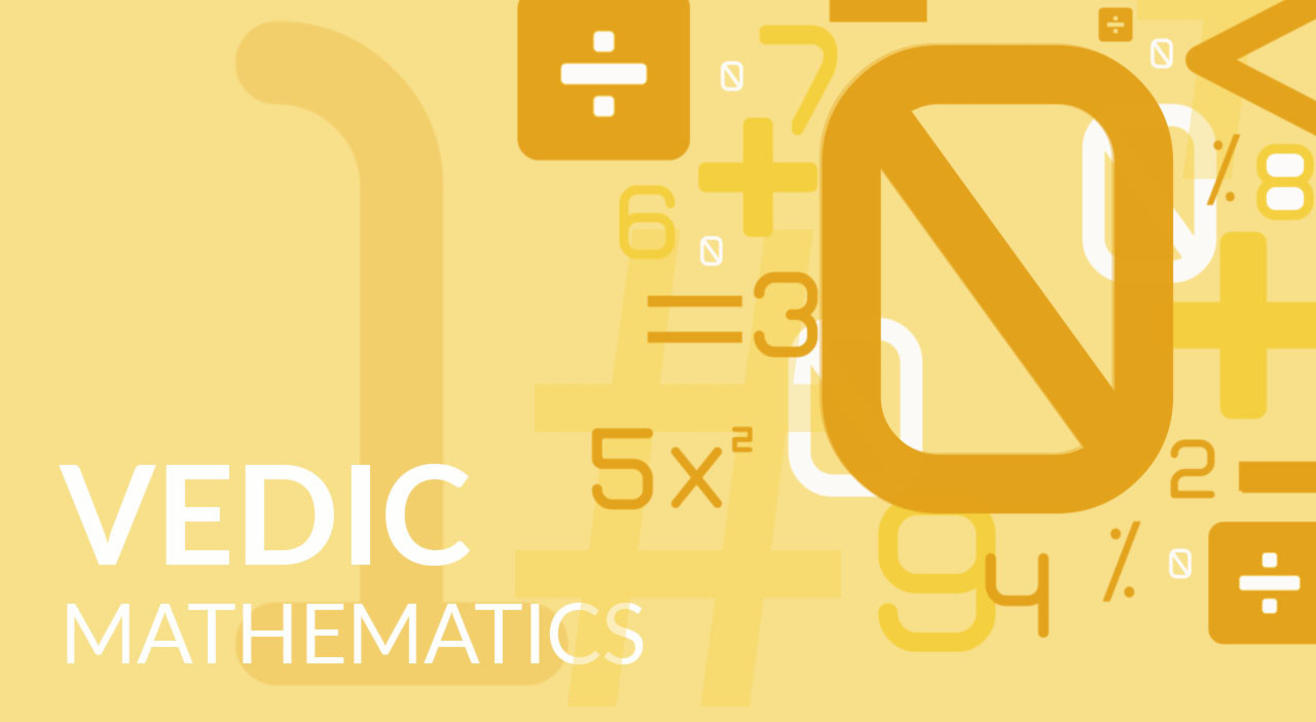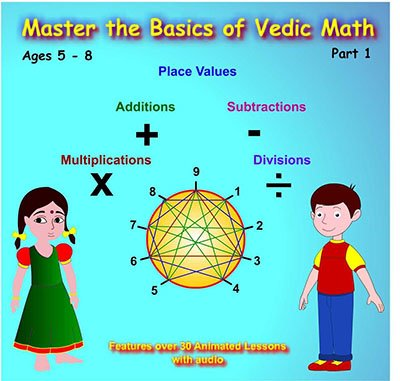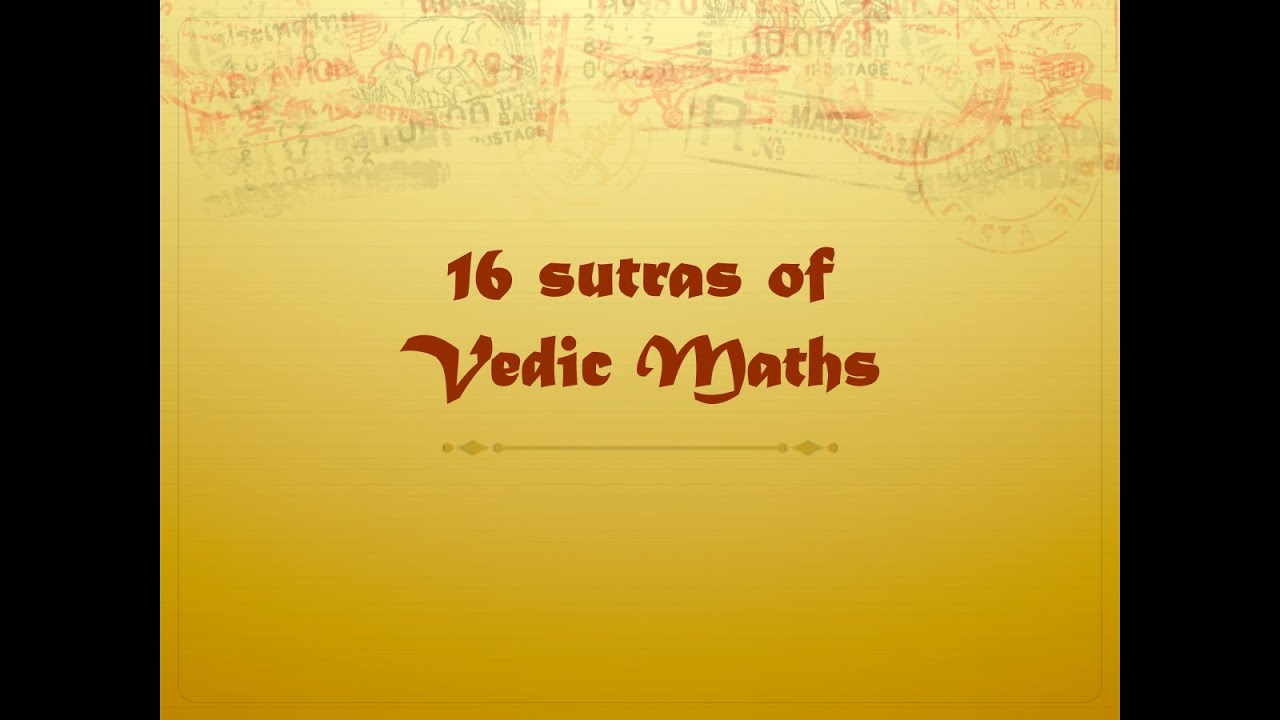Vedic Mathematics, an ancient Indian calculation system, is renowned for its concise and powerful techniques that simplify complex mathematical operations. At the core of Vedic Mathematics lies a set of guiding principles known as "sutras." These sutras are the foundation for various mathematical operations, enabling individuals to solve problems quickly and efficiently.
The Vedic Math Sutras are short and memorable aphorisms encapsulating mathematical concepts and methods. They provide a systematic approach to performing calculations mentally, eliminating the need for extensive written steps. By understanding and applying these sutras, individuals can enhance their computational abilities, improve mental agility, and easily tackle mathematical problems.
The beauty of Vedic Mathematics lies in its simplicity and versatility. The sutras cover various mathematical operations, including addition, subtraction, multiplication, division, square roots, and cube roots. They offer alternative problem-solving methods, often providing shortcuts and tricks that significantly reduce calculation time. Here, we will learn what are Vedic Maths Sutras.

Sutras Of Vedic Maths With Examples

Vedic Maths Sutras are ancient principles or aphorisms derived from the Vedas, ancient Indian scriptures. These sutras serve as the foundation of Vedic Mathematics and provide a set of concise formulas or techniques for performing mathematical calculations quickly and efficiently.
Ekadhikena Purvena
This sutra translates to "By one more than the previous one." It is used for multiplication and allows you to multiply numbers near a common base. For example, to multiply 12 by 13, you multiply the smaller difference (1) by, the larger number (13) and add the square of the difference (1^2 = 1) to the result.
Example: To find 25^2:
- Take 25 as the base.
- Apply "Ekadhikena Purvena."
- (25 + 1) = 26
- Append 25 to the result: 625.
Nikhilam Navatashcaramam Dashatah
This sutra translates to "All from 9 and the last from 10." It is used for subtraction and provides a quick way to subtract numbers from a base of 10. You can easily perform subtraction by complementing the digits from 9 and adjusting for carry-over.
Example: To subtract 37 from 100:
- Subtract the last digit (7) from 10, which gives 3.
- Subtract the remaining digit (3) from 9, which gives 6.
- Combine both results to get 63.
Urdhva-Tiryagbhyam
This sutra translates to "Vertically and crosswise." It is used for multiplication and enables you to multiply two-digit numbers efficiently. You can obtain the final result by multiplying the cross-products and adding the products of the vertically aligned digits.
Example: To multiply 23 by 11:
- Split 23 into 20 and 3.
- Multiply crosswise (20 by 3 = 60).
- Multiply vertically (3 by 3 = 9).
- Combine the results to get 253.
Paravartya Yojayet
This sutra translates to "Transpose and apply." It is used for division and simplifies the division process by reversing the divisor and applying multiplication instead. It is particularly useful for division involving recurring decimals.
Example: To divide 356 by 4:
- Transpose the divisor to get 45.
- Apply regular long division to get the quotient: 89
Anurupyena
This sutra translates to "Proportionality." It is used for proportionate division, finding, and simplifying complex fractions. It enables you to divide or simplify fractions based on the proportionality between numerators and denominators.
Example: If you have 3 mangoes that cost $9, find the cost of 5 mangoes.
- Use proportionality: (3 mangoes) / ($9) = (5 mangoes) / (X dollars).
- Cross-multiply and solve for X: X = ($15).

What Is Vedic Maths? - History & Origin
Meaning of Vedic Maths:
Vedic mathematics is a system of mathematical techniques and principles that originated in ancient India, particularly in the Vedas, the sacred texts of Hinduism. These techniques were first described in the ancient Indian texts known as the "Sutras" and were later organized and popularized in the 20th century by Swami Bharati Krishna Tirtha and others.
The term "Vedic mathematics" refers to this ancient Indian system of mathematics.
Vedic Mathematics traces its roots back to ancient India, where it was developed based on the ancient Vedic scriptures known as the Vedas. The Vedas considered the oldest sacred texts in Hinduism, contain a wealth of knowledge across various disciplines, including mathematics.
The origin of Vedic Maths can be attributed to the ancient Indian seers or rishis who, through their deep meditative practices, gained profound insights into the nature of numbers and mathematical principles. These rishis discovered and formulated a system of mathematical techniques and principles that are both elegant and efficient.
The knowledge of Vedic Math was passed down orally through generations, preserved and refined over thousands of years. The techniques were primarily transmitted from teacher to student in ancient gurukuls (traditional schools), where the Vedic scriptures and their profound wisdom were imparted.
It was in the 20th century that the profound knowledge of Vedic Mathematics was revived and brought to the public's attention by Swami Bharati Krishna Tirtha, a renowned scholar and spiritual leader. In his book, "Vedic Mathematics," Swami Bharati Krishna Tirtha introduced the world to the remarkable techniques and principles of Vedic Mathematics.
Since then, Vedic Maths has gained popularity worldwide for its simplicity, versatility, and effectiveness in solving complex mathematical problems. It has been recognised as a valuable tool for mental calculations, enhancing mathematical abilities, and promoting holistic thinking.
Today, Vedic Mathematics continues to be studied and practiced by students, teachers, and enthusiasts worldwide. Its teachings have been adapted and incorporated into various educational systems, helping individuals develop a deeper understanding of mathematics and improve their problem-solving skills.
The origin and history of Vedic Mathematics showcase its ancient roots and the rich mathematical heritage of India. It stands as a testament to the wisdom of the ancient seers and their profound contributions to the field of mathematics, leaving a lasting impact on how we approach and perceive numbers.
Interesting Facts about Vedic Math

The below listed interesting facts highlight the unique and valuable aspects of Vedic Mathematics, making it a fascinating subject for those seeking to explore alternative approaches to mathematics and enhance their mathematical skills.
- Vedic Mathematics is based on the ancient Indian scriptures known as the Vedas, which date back thousands of years. It draws inspiration from these ancient texts' mathematical principles and techniques.
- Vedic Mathematics offers simplified techniques and strategies for performing complex mathematical calculations mentally. These techniques often involve quick mental calculations and clever patterns that can significantly speed up calculations.
- Universality: Vedic Mathematics is not limited to specific mathematical operations or areas. It covers various topics, including arithmetic, algebra, calculus, geometry, and more. Its versatile nature makes it applicable to various mathematical concepts and problem-solving scenarios.
- Time-saving Methods: One of the key advantages of Vedic Mathematics is its ability to save time. The techniques allow for faster calculations, reducing the time spent on intricate mathematical operations. This efficiency is particularly beneficial in competitive exams and time-constrained situations.
- Cross-cultural Influence: While Vedic Mathematics originated in India, its principles and techniques have gained recognition and popularity globally. It has influenced mathematical education and practices in various countries, with educators and students appreciating its simplicity and effectiveness.
- Vedic Mathematics emphasizes mental calculations and trains individuals to rely less on written calculations. It promotes the development of mental agility, improves concentration, and enhances overall mathematical abilities.
- Holistic Approach: Vedic Mathematics goes beyond mere computation and encourages a holistic approach to problem-solving. It fosters logical thinking, creative problem-solving, and a deeper understanding of mathematical concepts.
- Interconnectedness: Vedic Mathematics demonstrates the interconnectedness of different mathematical operations. It highlights the relationships and connections between various mathematical concepts, enabling individuals to see the bigger picture and connect across different mathematics areas.
Vedic Maths For Beginners

Vedic Mathematics offers a wonderful opportunity for kids to develop their mathematical skills in a fun and engaging way. Here are some key aspects of Vedic Maths for kids:
Mental Math Abilities: Vedic Mathematics focuses on mental calculations, allowing kids to perform complex calculations mentally and swiftly. It enhances their mental math abilities, improving their speed and accuracy in solving mathematical problems.
Speed and Efficiency: Vedic Maths techniques enable kids to perform calculations quickly and efficiently. They learn shortcuts, tricks, and patterns that help them solve problems in a fraction of the time it would take using traditional methods.
Improved Number Sense: Vedic Mathematics helps kids develop a deep understanding of numbers and their relationships. They learn to see patterns, make connections, and grasp the underlying principles of mathematics. This enhances their number sense and overall mathematical fluency.
Problem-Solving Skills: Vedic Mathematics promotes critical thinking and problem-solving skills. Kids learn alternative approaches and problem-solving strategies, encouraging them to think outside the box and develop creative solutions.
Fun and Engaging: Vedic Maths techniques are designed to be enjoyable and engaging for kids. These techniques' visual and interactive nature makes learning math exciting and less daunting. Kids can explore different methods, play with numbers, and discover the joy of mathematical exploration.
Boost in Confidence: As kids become proficient in Vedic Mathematics, they gain confidence in their mathematical abilities. They feel more comfortable tackling challenging math problems and develop a positive mindset towards mathematics.
Universal Applicability: Vedic Mathematics techniques can be applied to various mathematical topics and concepts. Kids can use these techniques for addition, subtraction, multiplication, division, fractions, algebra, and more. The versatility of Vedic Mathematics makes it a valuable tool for a wide range of math-related tasks. Introducing Vedic Mathematics to kids can transform their perception of math and create a strong foundation for their mathematical journey.















